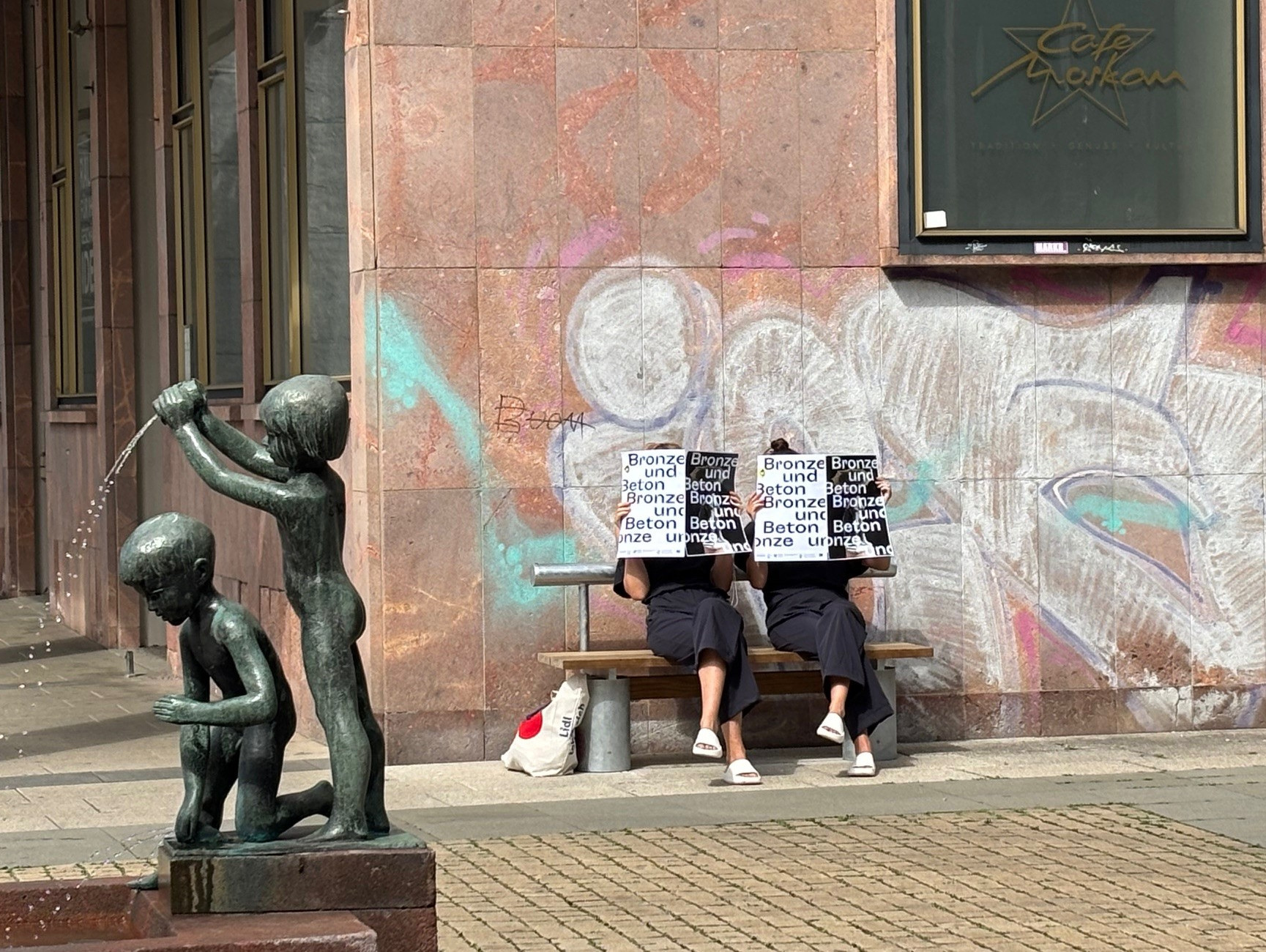In the volunteer editorial team, volunteers for Chemnitz 2025 publish reports on their experiences, assignments and adventures around the European Capital of Culture.
Kerstin is 59 years old and works as an office communications clerk. Born in Burgstadt, she is present as a volunteer at various Chemnitz 2025 events; among other things, she initiated the countdown to the European Capital of Culture year together with Lord Mayor Sven Schulze and other guests.
Today I'm not reporting on a volunteer assignment, but as a normal Chemnitz resident. I had read the announcement of a walk through Chemnitz city centre in the Capital of Culture and Free Press newsletter under the headline "Fetzt.- Die Kuha zieht nach draußen" and that made me curious. "The Institut für Ostmoderne invites you to an interactive artistic walk through Chemnitz city centre." With a performance, audio contributions, a workshop for modelling your own sculptures and a playful sculpture rally with a quiz, you can get to know some of the works of art that were created between 1960 and 1989. The meeting point was at the small fountain in the Street of Nations. There were around 50 of us - Chemnitz, Berlin, Austria, Saarland, Leipzig and .... - a colourful mix of participants.
Our three city guides, dressed in black uniform outfits reminiscent of old GDR patterns, briefly introduced themselves and greeted all the participants with a handshake. The three are originally from Berlin and are in Chemnitz until October 2025 as part of a programme supported by the Capital of Culture. They had a loudspeaker with them, from which GDR music was playing loudly. My God, how long it's been since I've heard these sounds, but I recognised them straight away! Our group now strolled through Chemnitz city centre, across the Brühl to the Schlossteich and stopped at various bronze and concrete sculptures and buildings. Voices came from the box. To be more precise, letters were read out that labourers, party comrades and functionaries had written to their friends or family members between 1960 and 1989. For example, as we stood at the Karl-Marx-Kopf and looked over to the town hall and the "Kongress" hotel, we heard a contribution from 1973: a young woman, an apprentice at the state-owned company "VEB Strickmaschinenbau Karl-Marx-Stadt", wrote to her sister, who she "hopes will visit Karl-Marx-Stadt soon", about how beautiful the town is. She wrote that many new buildings with flats and shops had been erected along the Street of Nations and that there were new, wide six-lane roads that had been built so that many cars would be able to drive on them in the future. She also wrote that Walter Ulbricht, the Chairman of the State Council of the GDR, was in the city and inaugurated the new building complex on Karl-Marx-Allee himself at a rally and subsequent celebration. She was very proud to have been there. The author was generally very proud to work and live in Karl-Marx-Stadt and to be involved in the reconstruction of her city. Through these texts, I was able to empathise with the world of that time and feel what seemed important to the people.
On the way, the city guides provided us with delicious ice cream and unfortunately our tour ended at the castle pond.we were offered the chance to round off the early evening together with a typical GDR meal. We didn't say no to this and went together to Falkeplatz to the "Cafè Bistro Smart". There, time had stood still for a while and we had a successful end to our walk with "Karlsbader Schnitte", "noodles with sausage goulash" and "beefsteak with potato salad". I think the joint modelling of our own sculptures was declared "heat-free" and turned out to be a real treat. To sum up: a wonderful Saturday with nice people who had interesting stories to tell and a new perspective on GDR artworks. If you would like to know more about the "Institut für Ostmoderne", please visit:Institute for Eastern Modernism Institute for Eastern Modernism
